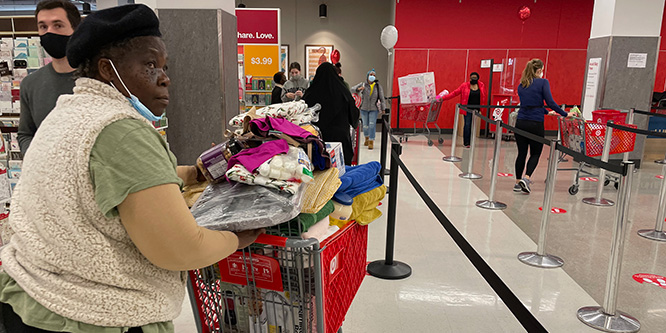
Photo: RetailWire
How can racial bias be removed from retail stores?
According to a new study, “Racial Bias In Retail,” commissioned by Sephora, two in five U.S. shoppers have personally experienced unfair treatment on the basis of their race or skin tone. The perception of bias is said to be particularly prevalent among Black shoppers.
Among races, 53 percent of Black shoppers felt such unfair treatment versus 36 percent for LatinXers, 35 percent for Asians and 24 percent for whites.
The study was conducted over a year-long period, from fall 2019 until late 2020.
Retail shoppers who have experienced mistreatment in-store were found to be three times more likely to say it happened while they were browsing than at checkout (38 percent vs. 12 percent).
Thirty-one percent of shoppers who were Black, indigenous or people of color (BIPOC) said that being greeted in a reasonable amount of time after entering a store was important to them, compared to 26 percent of white shoppers. Not having to wait a long time for service was also a higher shopping experience priority for BIPOC shoppers than whites. Staffing stores with associates who “look like me” was also deemed to be important.
To avoid feeling underserved or ignored, BIPOC customers say they often dress nicely or interact with employees to make it known they are interested in spending money. To avoid feeling watched or to avoid theft accusations, they adjust their body language and leave purses or bags at home.
Despite their experiences, only 30 percent of overall shoppers published an online review or posted on social media about unfair treatment. Fifteen percent raised the issue with a manager or store supervisor. Among those who have complained, 61 percent were unsatisfied with the retailer’s response.
Sephora has rolled out a number of actions to curb racial bias in the in-store experience:
- Rolling out a new greeting system across stores to ensure a consistent experience for visitors upon entry;
- Creating new training modules for associates to define what behaviors will not be tolerated;
- Delineating recovery responsibilities to loss prevention specialists to enable associates to focus solely on client service;
- Reducing the presence of third-party security by replacing them with in-house professionals;
- Implementing new feedback mechanisms;
- Establishing a D&I (diversity & inclusivity) in-store experience dashboard to provide analytics on client service and feedback for monthly checks.
Discussion Questions
DISCUSSION QUESTIONS: What steps can retailers take to minimize racial bias on selling floors? Do you have other suggested actions to add to those listed by Sephora?


I am saddened, although not necessarily surprised, by the results of this study. Everyone coming into a store deserves respect and pleasant service, just as retail workers also deserve politeness and cordiality in return.
At a high level, reinforcing company policies of treating everyone equally is important; and if these are not in place some serious questions need to be asked! However, that is probably not enough. Ensuring that the workforce is diverse and includes a variety of people is a vital way of remedying these issues, as is celebrating Black culture and products. Having good feedback which can be integrated into ongoing training is also a sensible step.
I agree with Neil, it’s about an inside-out approach. Promoting diversity within the retail organization is just as important to follow through with minimizing racial bias on the front-end. Inclusion should be part of the business model. Retailers should facilitate trainings, encourage flat hierarchies, and establish diversity targets for recruitment. The first (and necessary step) is to acknowledge bias. Sephora’s study shows a commitment to their own diversity clauses. More brands should take a similar approach; to really integrate learning, knowledge-sharing, and understanding on a company level.
Retail is a people business. People have bias and in a number of cases, don’t even realize it. Training programs, etc. as they are doing can help, but you can’t eliminate bias completely, because of human nature.